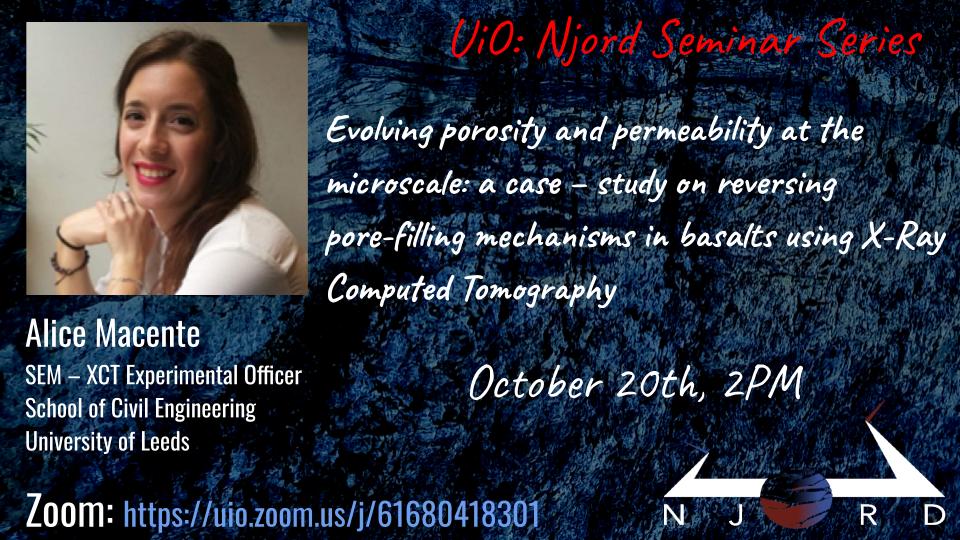Title of the talk: Evolving porosity and permeability at the microscale: a case – study on reversing pore-filling mechanisms in basalts using X-Ray Computed Tomography.
Fluid-rock interaction represents a common deformation process that causes substantial local scale physical and chemical changes, affecting porosity and permeability properties of the rock. Understanding how fluid-rock interactions occur is critical to quantify how these local microscale dynamics affect the macroscale behaviour of the lithosphere. Basaltic rocks are considered excellent candidates for CO2 storage by in situ mineral trapping, due to their large presence on Earth’ surface and their higher reactivity with CO2 to form calcium-rich minerals. Often carrying a high-volume fraction of vesicles, basaltic rocks can be an important reservoir horizon in hydrocarbon reservoirs. When the vesicle network has been filled by earlier mineralization the basalts can act as impermeable seals and traps. Characterizing the spatial and temporal evolution of the porosity and permeability is critical to understand the CO2 storage potential of basalts. We exploited X-ray computed tomography (XCT) to investigate the precipitation history of an amygdaloidal basalt containing a pore-connecting micro-fracture network now partially filled by calcite as an analogue for CO2 mineral trapping in a vesicular basalt. The fracture network likely represents a preferential pathway for CO2-rich fluids during mineralisation. We quantified the evolution of basalt porosity and permeability during pore-filling calcite precipitation by applying novel digital erosion techniques to “back-strip” the calcite from the amygdales and fracture networks. We found that permeability evolution is dependent on the precipitation mechanism and rates, as well as on the presence of micro-fracture networks, and that once the precipitation is sufficient to close off all pores, permeability reaches values that are controlled by the micro-fracture network. These results prompt further studies to determine CO2 mineral trapping mechanisms in amygdaloidal basalts as analogues for CO2 injections in basalt formations.
Short bio: Dr Alice Macente is the lab manager and XCT Experimental Officer at the University of Leeds in the School of Civil Engineering. Her research focuses on understanding the microstructural evolution of fluid-rock interactions in porous media, CO2 sequestration, fluid flow and strain localisation, combining classical analytical techniques (SEM, EBSD, EMPA) with non-destructive imaging such as X-ray Computed Tomography (XCT), Digital Volume Correlation and modelling. She graduated with a PhD from the School of Geosciences at the University of Edinburgh in 2017. She has then worked as a postdoc at Stanford University conducting permeability modelling, and at University of Glasgow where she was also managing an X-ray Computed Tomography facility (XCT). Despite her work focuses on solving societal challenges around geoscience and civil engineering, she enjoys working with researchers from various scientific disciplines.
You will find the schedule for Njord Seminar Series Fall 2023 here.
To get news, invitations to seminars and other activities at Njord, please subscribe to our mailing list.
